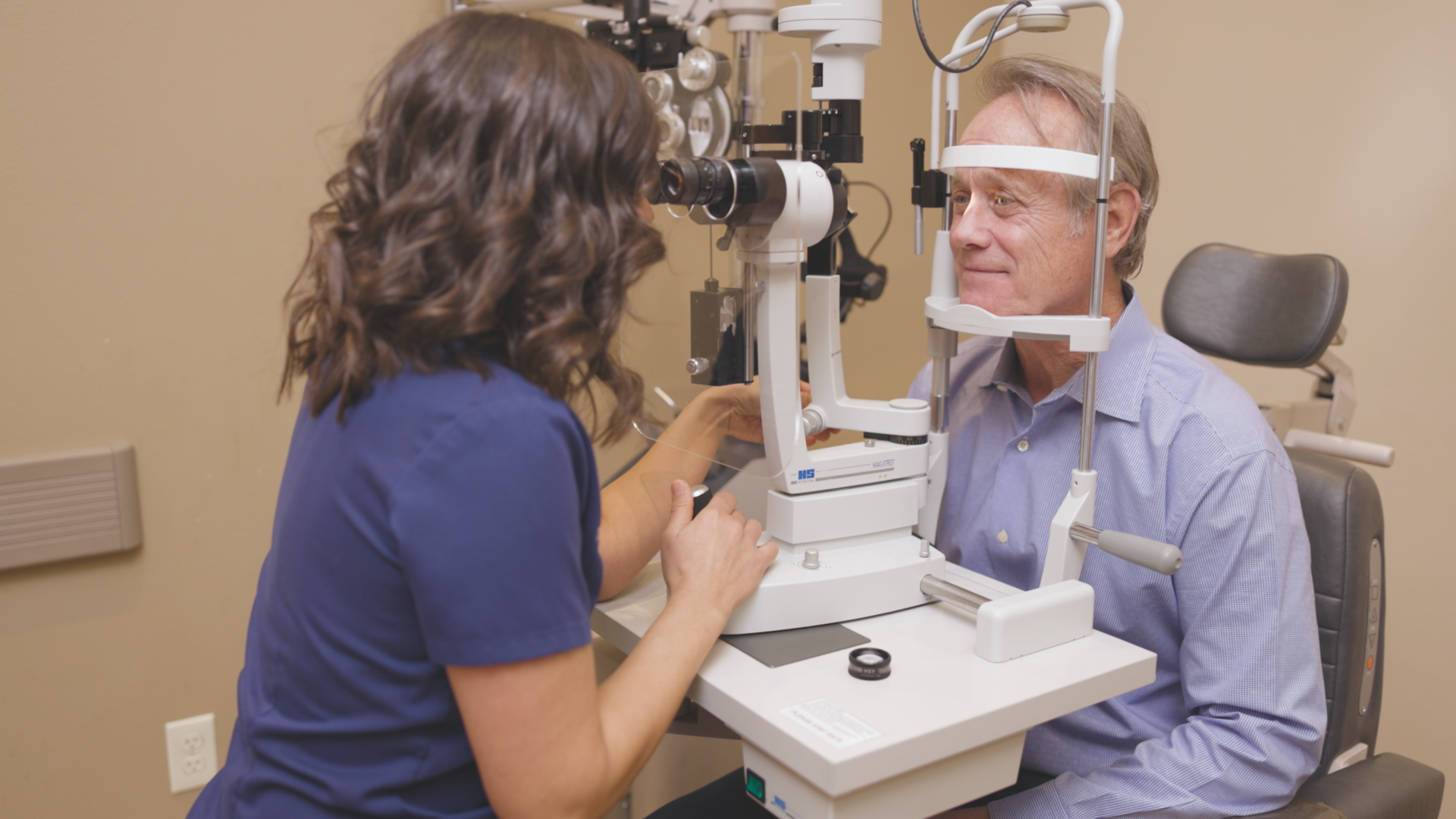Experience Personalized Care with Opticore Optometry in Chino
Experience Personalized Care with Opticore Optometry in Chino
Blog Article
Exploring the Most Recent Technical Developments in Optometry and What They Mean for Optometrists
In the ever-evolving field of optometry, current technical improvements are improving exactly how experts come close to eye care. From the accuracy of Optical Comprehensibility Tomography to the nuanced insights supplied by AI-driven diagnostic devices, these technologies are establishing brand-new criteria in person analysis and therapy. Teleoptometry is poised to redefine accessibility, ensuring that proficiency goes beyond geographical restrictions. As these advancements penetrate the technique, optometrists are confronted with the obstacle of embracing these devices to enhance person end results. Yet, the question stays: just how will these technical changes redefine the duties and obligations within the profession?
Developments in Diagnostic Devices
Progressing the field of optometry, technologies in diagnostic tools have actually changed the means eye treatment experts assess and identify eye conditions and visual disabilities. The past decade has actually seen substantial technological improvements, allowing more exact and comprehensive evaluations. Optical Coherence Tomography (OCT), for instance, provides high-resolution cross-sectional pictures of the retina, enabling the very early detection of illness such as glaucoma and age-related macular deterioration. This non-invasive imaging method has actually become crucial in contemporary optometric practice.
Another secret advancement is the introduction of innovative corneal topography systems, which map the surface curvature of the cornea with accuracy. These tools are especially valuable for suitable get in touch with lenses and detecting corneal disorders. Furthermore, electronic retinal imaging has actually changed standard ophthalmoscopy, using in-depth, breathtaking sights of the retina that promote detailed visual evaluations.
The growth of wavefront aberrometry has likewise been critical, allowing the analysis of refractive errors with unparalleled accuracy (Opticore Optometry). This modern technology helps in tailoring rehabilitative lenses and boosting medical end results for refractive surgical treatments. Jointly, these analysis innovations encourage eye doctors to deliver premium patient care, ensuring early intervention and tailored treatment techniques, inevitably enhancing visual health and wellness end results
AI in Person Monitoring
Structure on the foundation of innovative diagnostic tools, the unification of synthetic knowledge (AI) in individual monitoring represents a transformative jump for optometry. AI systems are significantly utilized to improve performance, accuracy, and personalization in individual care.
Furthermore, AI-driven platforms promote streamlined patient communications and management processes. Automated organizing, digital appointments, and customized follow-up plans not only enhance client complete satisfaction but additionally maximize time administration for specialists. These systems can triage people based on the urgency of their problems, making sure that those in critical demand obtain prompt focus.
Furthermore, AI enhances decision-making by offering eye doctors with evidence-based referrals and treatment pathways. By integrating data from digital wellness records, AI devices use insights that educate scientific choices, reducing the threat of errors and improving person end results. As AI continues to develop, its function in client administration will likely expand, improving the landscape of optometric care.
Developments in Retinal Imaging
In the realm of optometry, retinal imaging has actually experienced amazing technological advancements that are boosting diagnostic capacities and patient care. Developments such as Optical Comprehensibility Tomography (OCT) and fundus digital photography have revolutionized how eye doctors imagine and analyze the retina. OCT, specifically, offers high-resolution, cross-sectional photos of the retina, permitting the comprehensive exam of its layers. This capability is very useful for very early discovery and site link monitoring of problems like glaucoma, diabetic retinopathy, and age-related macular degeneration.
Boosted imaging techniques like OCT angiography are more refining diagnostic accuracy. Optometrist Chino. Such innovations promote the identification of min retinal changes that can indicate condition progression.
Moreover, innovations in expert system are boosting retinal imaging by enabling automated analysis of large datasets. These systems aid eye doctors in recognizing patterns indicative of pathology, thus improving analysis accuracy and efficiency. Collectively, visit these advancements are changing retinal imaging right into a cornerstone of contemporary eye care, boosting end results and broadening restorative opportunities.
Teleoptometry's Growing Duty
Teleoptometry is significantly coming to be a vital part of eye care, driven by innovations in data and analysis tools. As optometry embraces electronic makeover, teleoptometry facilitates remote assessments, allowing optometrists to expand their solutions past typical borders. This is specifically helpful in country and underserved areas where accessibility to specialized eye treatment is usually limited. By leveraging high-resolution video clip conferencing and progressed retinal imaging, optometrists can perform thorough eye tests from afar, making certain timely diagnosis and treatment.
The combination of expert system (AI) additional improves teleoptometry, allowing the analysis of visual information and assisting in the detection of eye conditions such as glaucoma and diabetic retinopathy. AI-powered formulas can quickly analyze intricate imaging data, offering optometrists with beneficial insights that boost clinical decision-making.
Additionally, teleoptometry supports continuity of care via seamless combination with electronic wellness records (EHRs), enabling optometrists to keep extensive individual histories. When consulting with different specialists., this ensures that patients receive individualized and regular care also.
In spite of these benefits, obstacles remain, consisting of guaranteeing data safety and handling person expectations. Nonetheless, teleoptometry represents a considerable stride in the direction of even more obtainable, efficient, and patient-centered eye care. As innovation progresses, its duty is poised to broaden further.

Future Fads in Eye Care
A myriad of cutting-edge trends is readied to reshape the future of eye care, driven by technical advancements and the advancing demands of patients. One significant Visit This Link fad is the combination of synthetic intelligence (AI) in diagnostics, which promises to boost the precision and efficiency of eye evaluations. AI algorithms can examine vast amounts of data from retinal photos, potentially finding problems like diabetic person retinopathy and glaucoma earlier than typical methods.
Additionally, individualized medicine is acquiring grip in optometry, with genetic screening notifying tailored therapy strategies. This method aims to enhance patient outcomes by tailoring treatments to private hereditary accounts. Wearable modern technology, such as wise call lenses, is also coming up, offering real-time monitoring of intraocular pressure or sugar levels, hence offering continual understandings into ocular and systemic health and wellness.
The adoption of increased truth (AR) and virtual truth (VIRTUAL REALITY) in training and client education is an additional arising fad. These innovations offer immersive experiences that can boost understanding and abilities both for people and optometrists. As these fads progress, eye doctors must stay abreast of technological advancements to offer advanced treatment, guaranteeing enhanced client end results and fulfillment in the vibrant landscape of eye treatment.
Conclusion

Jointly, these analysis improvements empower eye doctors to deliver superior client treatment, guaranteeing very early treatment and tailored treatment techniques, eventually improving visual health and wellness end results.

As these innovations continue to evolve, optometrists have to adapt and incorporate them into method, eventually maximizing process performance and elevating the requirement of eye care delivered to people.
Report this page